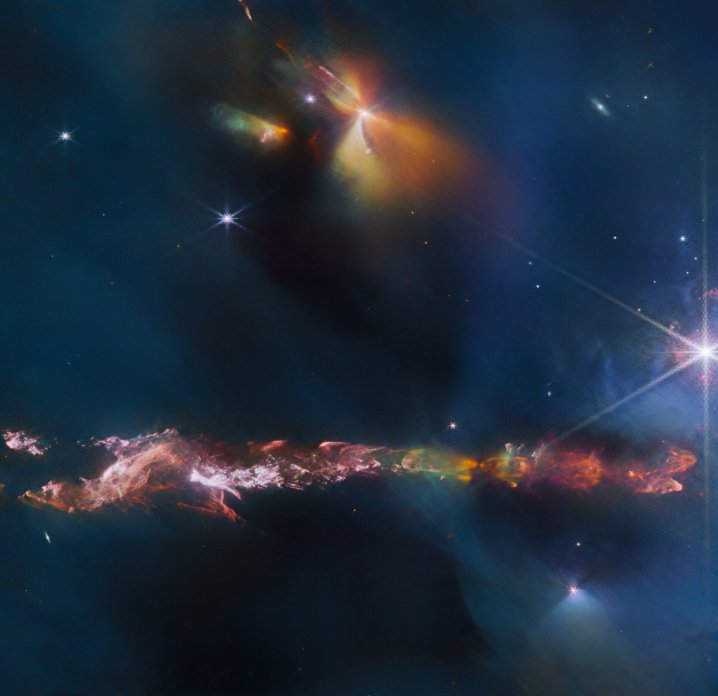A new image of a Herbig-Haro object captured by the James Webb Space Telescope shows the dramatic outflows from a young star. These luminous flares are created when stellar winds shoot off in opposite directions from newborn stars, as the jets of gas slam into nearby dust and gas at tremendous speed. These objects can be huge, up to several light-years across, and they glow brightly in the infrared wavelengths in which James Webb operates.
This image shows Herbig-Haro object HH 797, which is located close to the IC 348 star cluster, and is also nearby to another Herbig-Haro object that Webb captured recently: HH 211.

The image was taken using Webb’s Near-Infrared Camera (NIRCam) instrument, which is particularly suited to investigating young stars, Webb scientists explain in a statement, : “Infrared imaging is a powerful way to study newborn stars and their outflows, because the youngest stars are invariably still embedded within the gas and dust from which they are formed. The infrared emission of the star’s outflows penetrates the obscuring gas and dust, making Herbig-Haro objects ideal for observation with Webb’s sensitive infrared instruments.
“Molecules excited by the turbulent conditions, including molecular hydrogen and carbon monoxide, emit infrared light that Webb can collect to visualize the structure of the outflows. NIRCam is particularly good at observing the hot (thousands of degree Celsius) molecules that are excited as a result of shocks.”
This particular Herbig-Haro object is unusual in that scientists originally believed that it was created from a single young star, as most such objects are. But these detailed observations reveal that there are actually two sets of outflows, coming from a pair of stars at the center.
In addition to the bright ripples of the Herbig-Haro object in the lower half of the image, there are also thought to be more new stars being born in the upper half of the image. The bright smudge in shades of yellow and green is believed to host two young protostars.
Editors’ Recommendations
Services Marketplace – Listings, Bookings & Reviews